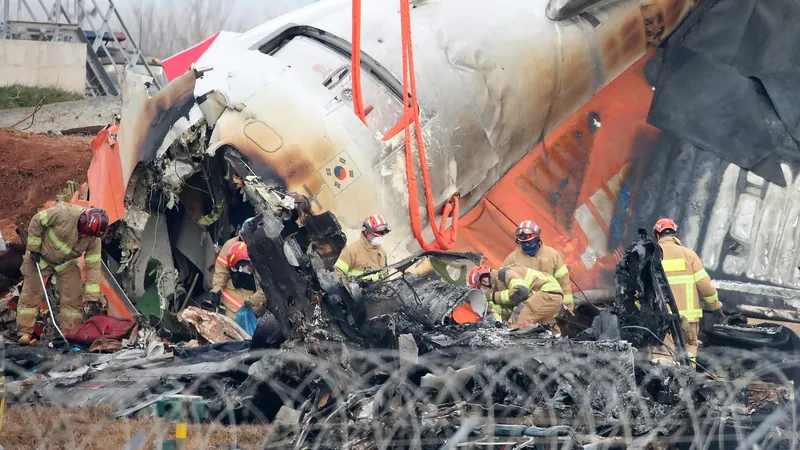
Air Canada and KLM Escape Catastrophe Amid South Korean Aviation Tragedy
2024-12-30
Author: Lok
Air Canada Incident
In a weekend marked by terror in the skies, two major airlines narrowly escaped potential disaster as South Korea dealt with one of its gravest aviation crises in years.
On Saturday, an Air Canada flight, designated AC2259, which landed at Halifax Stanfield International Airport in Nova Scotia after a journey from St. John's, Newfoundland, encountered a serious problem related to its landing gear. Passengers aboard the Bombardier Q400 reported intense drama as the aircraft descended; Nikki Valentine, a passenger on board, recounted, 'The cabin tilted, we saw sparks and then flames and then smoke started getting sucked into the cabin.' Thankfully, the incident led to no injuries, but the airport experienced disruptions, remaining closed for over an hour as flights were grounded or delayed.
A thorough investigation into the event is now being conducted by the Transportation Safety Board of Canada to ascertain the root cause of the landing gear issue.
KLM Flight Peril
Meanwhile, KLM Flight 1204, traveling from Oslo, Norway, to Amsterdam, faced its own perilous moment. The Boeing 737 was diverted to Sandefjord Airport following reports of a 'loud noise' during its flight. After landing, the aircraft veered off the runway and into grassland, prompting an investigation from KLM’s safety team. Remarkably, there were no injuries reported from this incident, but it raised concerns about flight safety protocols.
The Jeju Air Tragedy
In contrast, not every flight was so fortunate. A Boeing 737-800 operated by South Korea's budget airline Jeju Air tragically crash-landed at Muan International Airport around 9 a.m. local time on the same day. This catastrophic incident involved 181 individuals onboard—175 passengers and 6 crew members—of whom only two crew members survived. Eyewitness reports indicated that the aircraft skidded along the runway on its belly before colliding with a barrier, leaving little of the plane intact.
Ju Jong-wan, a director of aviation policy at South Korea's Ministry of Land, announced that prior to landing, the aircraft had been alerted about a possible bird strike. Moments later, a mayday was issued before the disastrous outcome unfolded. Jeju Air CEO Kim E-bae stated that the airline had maintained an impeccable safety record throughout its nearly 20 years of operation, with routine maintenance checks showing no discrepancies.
Conclusion
These harrowing events serve as a stark reminder of the dangers that can arise in aviation, even in the absence of visible faults. As investigations proceed, the global airline industry watches closely, keen to learn lessons that may prevent future tragedies.



 Brasil (PT)
Brasil (PT)
 Canada (EN)
Canada (EN)
 Chile (ES)
Chile (ES)
 Česko (CS)
Česko (CS)
 대한민국 (KO)
대한민국 (KO)
 España (ES)
España (ES)
 France (FR)
France (FR)
 Hong Kong (EN)
Hong Kong (EN)
 Italia (IT)
Italia (IT)
 日本 (JA)
日本 (JA)
 Magyarország (HU)
Magyarország (HU)
 Norge (NO)
Norge (NO)
 Polska (PL)
Polska (PL)
 Schweiz (DE)
Schweiz (DE)
 Singapore (EN)
Singapore (EN)
 Sverige (SV)
Sverige (SV)
 Suomi (FI)
Suomi (FI)
 Türkiye (TR)
Türkiye (TR)
 الإمارات العربية المتحدة (AR)
الإمارات العربية المتحدة (AR)